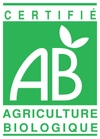
Organic Lavender for herbal teas-25g-Herberry
Remaining stock : 10


Organic Lavender herbal teas
Discover the product Organic Lavender for herbal teas, 25g from Herberry.
Why use Herberry Lavender herbal teas?
Properties:
-Calming, soothing
-Fight against insomnia
Indications:
Anxiety, restlessness, insomnia.
Most produced:
+Certified organic farming.
+Made in France. Picked in France.
What is Lavender from Herberry herbal teas?
Lavandula (lavenders) is a genus of plants in the Lamiaceae family, formerly called Labiaceae.
These are dicotyledonous shrubs, with flowers most often mauve or purple arranged in spikes, most of which are very fragrant species, are widely used in all branches of perfumery, in particular lavandin (Lavandula ×intermedia). They grow mainly on dry, sunny limestone soils, with the exception of Lavandula stoechas, which prefers siliceous soils.
All lavenders are honey plants, that is to say, highly sought after by bees.
Coming from the west of the Mediterranean basin, lavender was already used by the Romans to preserve linen and perfume baths. In Provence, lavender was used in the Middle Ages for the composition of perfumes and medicines, but it was from the 19th century that its cultivation developed.
How to use Lavender herbal tea from Herberry?
1 - How many plants should I put for a cup?
For a 30cl mug, a good pinch of plant (one teaspoon) well crumbled. The more the plant is crumbled, the more flavor and active ingredient there will be in the water.
2 - How long should I let the plants infuse?
Generally 5 minutes of infusion is enough, but for certain plants such as chamomile, do not exceed 3 minutes as it will become bitter.
3 - Can I give it to children?
For children aged 5 to 10 years old the same dose as for an adult, but in a 1/2 cup which will be completed with water.
4 - How many cups can I drink per day?
For a cure, we recommend 3 herbal teas per day for 21 days. That's a maximum.
All the information on the virtues of the simple herbal teas that you will find under the Herberry brand are taken from several recognized works and traditional knowledge:
“therapeutic plants” by Max Wichtl and Robert Anton,
"The Book of Good Herbs" - "The Book of Trees, Shrubs and Shrubs" - "The Companion Plant" by Pierre Lieutaghi,
“our grandmothers knew” by Jean Palaiseul,
“bio-indicator plants” by Gérard Ducerf,
“the summary of the history of common plants” by PJB Chomel,
“The path of herbs” by Thierry Thevenin.
These uses, medicinal or food, are based on traditional knowledge validated by their age... They in no way exclude the consultation of a doctor who will have the competence to establish a diagnosis and prescribe an appropriate treatment.
Composition of Herberry Lavender herbal teas.
100% organic lavender. (Lavandula angustifolia L)

